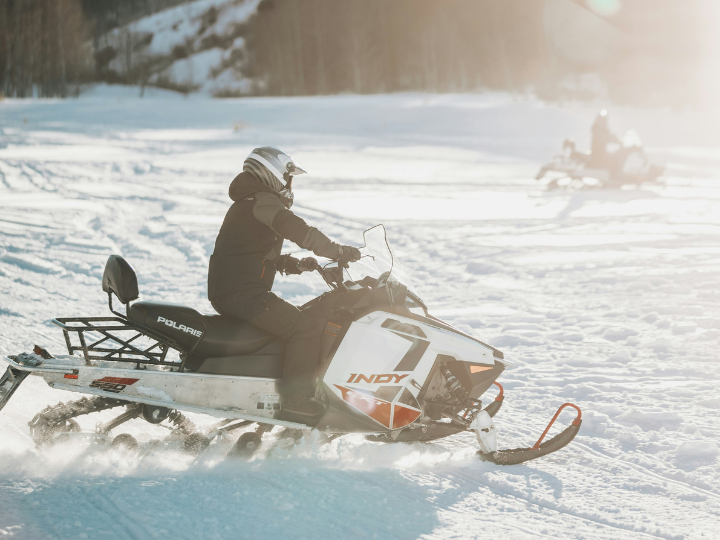Our Top Tips Will Help You Get Your Slingshot Road-Ready
March, 30 2022
One of the joys of living in Canada is taking a scenic drive along our backroads. Our countryside is vast and beautiful — and exploring it from a sporty vehicle like a Polaris Slingshot can be a fun weekend pastime. Before you get on the road, though, there are some important tips and tricks about your Slingshot you should know.
Slingshots are considered to be motorcycles by the Ontario government. This means you must wear a motorcycle helmet while driving and register your vehicle like a motorcycle. It also means you should remember the safety features of your Slingshot are less robust than you are familiar with in your usual car or truck. Be sure to educate others who drive your Slingshot about its features and how to drive it safely.
Read on to learn more about getting your Slingshot on the road, then reach out to the experts at Duliban Insurance to learn more!
Tips for Getting Your Slingshot on the Road
Ontario is presently running a pilot program to test the viability of three-wheeled vehicles on its public roads. The pilot program began in March 2016 and will conclude in March 2026. The government is trying to decide if it will allow the use of three-wheeled vehicles on Ontario roads on a permanent basis through this pilot.
If you would like to participate in the pilot program, you must register your Slingshot or other three-wheeled vehicle with the government as a motorcycle. Then you must follow all safety and pilot program requirements, such as always wearing a helmet while driving.
If you are a new Slingshot owner, you probably have lots of questions about your new ride. Our goal is to help you get on the road safely to start enjoying your new vehicle quickly. But before you hop on, check out our tips:
- Have either a full G class driver’s licence or an A, B, C, D, E or F driver’s license, which is required to drive a Slingshot on the roads in Ontario. Make sure any drivers are licensed before you allow them to take your vehicle for a drive. Drivers must be at least 16 years old to start the licensing process, and it will take almost two years for most drivers to attain their full G class driver’s license.
- Slingshots are also called three-wheeled vehicles, or TWVs. They have basic parts like an engine, three wheels, pedals, seatbelts, and a steering wheel. However, TWVs do not have advanced safety features like airbags. Be aware of these safety limitations when using your Slingshot and plan accordingly to stay safe on the roads.
- Drivers must wear a motorcycle helmet and have their seatbelt properly fastened while operating their Slingshot.
- Slingshot drivers may not have small children or infants as passengers.
- You cannot attach a side car or trailer to your Slingshot in Ontario when driving on public roads.
- Slingshots must be registered in Ontario as motorcycles. You will need to pay the associated fees for your license plate and license plate sticker when you register your Slingshot. Depending on where in Ontario you live, your fees will vary.
- After the pilot period ends, you can expect changes to the program. If the Ontario government decides to allow three-wheeled vehicles on public roads permanently, we may see registration, insurance, or safety requirement changes.
Registration and Insurance Coverage Is Mandatory for Your Slingshot
In Ontario, you need to register and insure your Slingshot as a motorcycle. Ontario law requires drivers to have proof of their insurance before they can attach plates to their Slingshot, renew their registration, or buy a temporary permit. A motorcycle license plate sticker costs $42 in Southern Ontario and $21 in Northern Ontario. You will also need a vehicle permit for $32 and a license plate for $59.
Make sure to carry your pink insurance card with you whenever you go for a drive in your Slingshot. A police officer could ask to see your card and you may be fined up to $400 if you cannot produce it when asked.
Since your Slingshot is considered a motorcycle, for registration and insurance purposes, you will need to carry basic minimum coverages on your Slingshot as follows:
- $200,000 in third-party liability
- $1 million for medical payments
- Funeral expense benefits up to $6,000
- Income replacement benefits
- Death benefits of $25,000 for a spouse and $10,000 for each surviving dependent
You can always elect to add more coverage to protect yourself by increasing these limits or by adding additional coverages. Many people like to carry collision coverage on their Slingshot to protect their vehicle from damages. In addition, you could add these coverages to your Slingshot policy for even more protection:
- Comprehensive coverage
- Property damage liability
- All perils coverage
- Bodily injury liability
- Specified perils coverage
Ask us about these specialized coverages and how they may be able to help you. We can review your risks and exposures together and customize your Slingshot policy to best meet your individual needs. We have solutions designed to meet the needs of every Slingshot owner.
Shop Around for the Best Slingshot Insurance Coverage
Comparing rates and shopping around is the best way to find insurance coverage for your Slingshot or other three-wheeled vehicle at the lowest rate. Start with our free online quote tool to see rates from Canada’s top insurance companies, then reach out to us at Duliban Insurance for more information.
We will walk through all your options and discuss your coverage needs so we can help you find the best policy and rate for you. Not all insurance policies are the same, and you want to make sure you have the right coverage before you get on the roads with your Slingshot.
How Do I Learn More?
To learn more about getting your Slingshot out on the road, contact the experts at Duliban Insurance. Our licensed experts will be happy to answer any questions you have.
External Links:












